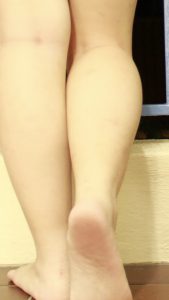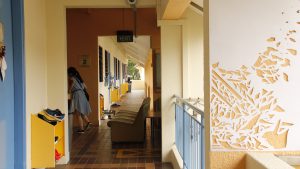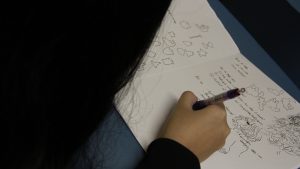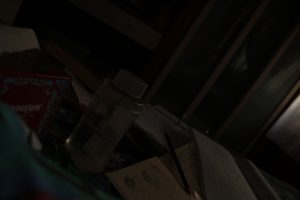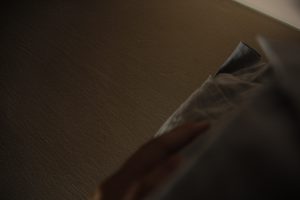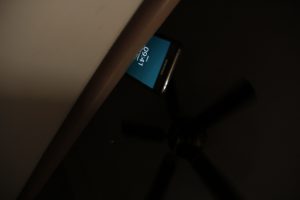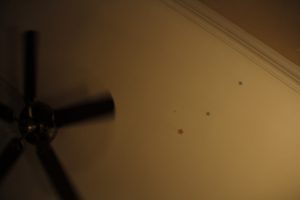From the moment everyone started putting up photos, I started calculating to see if I could actually not fail. What a piece of work is a man!
Here’s the final arrangement.
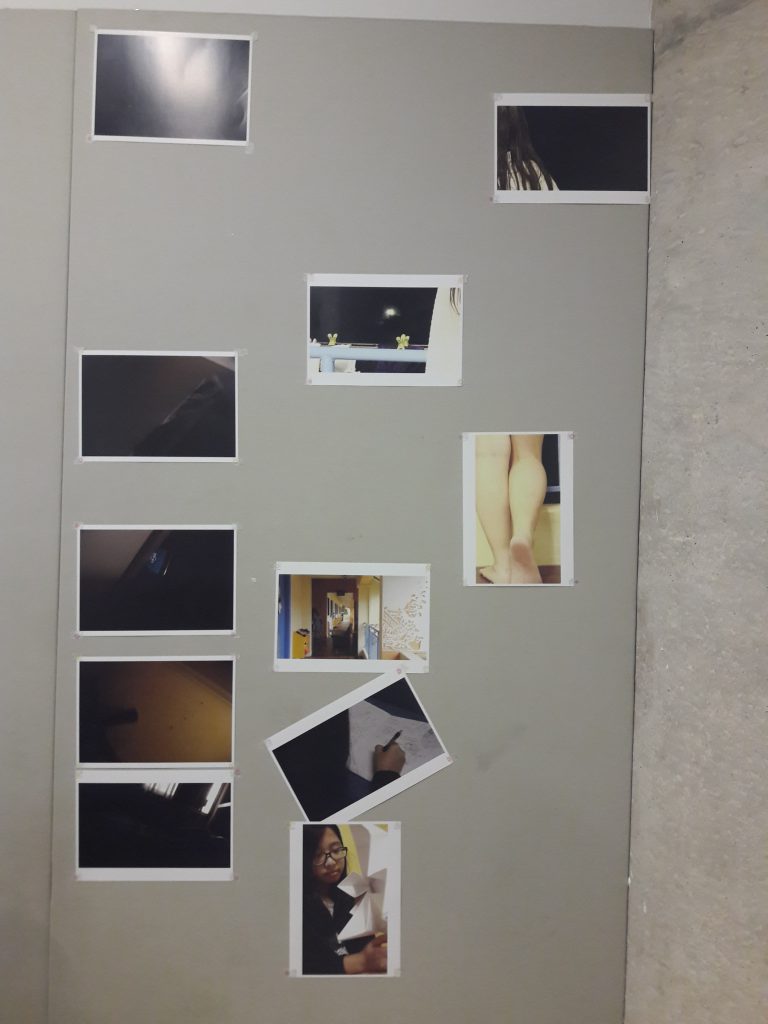
TASK 1
I don’t really know where I got this idea, it came out of nowhere, mostly. I suppose it was mostly based on the theory of positive and negative spaces, and how I’ve used a similar technique when doodling: draw a full fledged form, then use a penknife to cut out parts of the paper, leaving a still intact form, though missing certain parts.
Key Concepts & Ideas
If all of this is too long, I think this quote from Atonement by Ian McEwan is a pretty good summary as to explaining the feeling of infiniteness and nothingness which led me to this form. If not, then proceed ahead.
- Fragmentation
Humans are multifaceted creatures ruled by change, where there is no derivable self from our flawed perspectives. Where the identity reshapes itself eternally and is too extensive, there is no way to express it tangibly. How can anyone comprehend me from only what they can discern? How can I know the unfathomable depths of my inconceivable lump of flesh? How can 3 photos capture the entirety of an intangible soul?
All that is visible is only what is perceived, but there are many things which cannot be seen. While it is easy to extrapolate and imagine you know what is in those fragments you can’t see based on what you CAN see, there is no certainty; there is only assumption. Consequently, in the lack of an ability to consolidate and present everything, I purposefully took a single photo, and presented pieces in a way that would make people assume it’s “me”, where that can still not be an absolute certainty, though it is likely.
Consequently, the final display has the photos at appropriate distances from each other to provide the idea of puzzle pieces in the right places.
To add onto that, I fall back onto presenting “nothing”:
- Mundanity
It’s very simply a view of me outside my room, where I attempted to, minimally, ensure each photo provided sufficient context. Photo A shows that it is night, and that my hair is wet; B, the laundry pegs and distinctively hall railing; C, bare feet standing comfortably. (Also, not incredibly clear, but a towel is draped over my shoulders.) As I mentioned in the tutorial, it’s meant to give insight into a regular occurrence in my daily life, that of me tending to shower at night before hanging my hand-washed clothes outside, where I am often too lazy to wear footwear (it’s really a very, very short distance and I refuse to expend energy on something so unnecessary). There’s a lot I could say, like how I’ve developed all these little habits of air drying my hair versus blow drying, or draping a towel, or showering only at night, or not wearing shoes… But no matter how you analyse it, it’s literally just me doing something ordinary. It could be special that I drape my towel around my shoulders and let my hair air dry as I leave my hand-washed clothes to dry at night in hall, or it could be meaningless.
It’s a reflection of the fact that I am a mere ordinary creature, one of many humans who believe they are “unique”, when we are fundamentally more similar than we think. I’m horrified by the state of the world! I’m depressed by the transience of life! I’m pained by the cruelty of humanity! We make infinity out of nothingness. That people express those feelings is sometimes a form of egoism, that “I am more human than another” simply because you assume you hold more depth of character.
TASK 2
This was a much more ordinary idea which didn’t involve me utterly neglecting everything we learned in class about framing and shot. The idea for the object mostly stemmed from right after the project brief was introduced, and I instantly remembered a photo which was once taken of me, back in junior college (the photographer was my classmate):
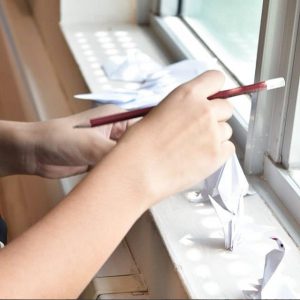
I feel like what struck me about the photo was the seeming tenderness of the hands, and the “purity” of the image. I have a thing against showing my face, especially where I dislike looking at my face, facial expression is far too unsubtle, and I seem to have difficulty making my emotions and facial muscles synchronise.
That’s also where I got the idea for paper.
Key Concepts and Ideas
- Varying levels of attention (linked to shot scale)
Paper is rather omnipresent, from the flyers we ignore to the paper we use in Foundation Drawing. I tried to present a sort of spectrum of attention versus inattention, where the physical distance between the paper and I indicated varying levels of focus.
Photo P shows me far away, neglecting the paper in favour of a destination; Photo Q, me interacting with the paper, but not as an object in its own right as opposed to a medium for drawing and writing (also reflected in lack of direct touch as opposed to through a proxy, the pen); Photo R, me interacting with the paper directly (that’s the face I make when I’m casually focused on something). Another factor to present that is the “gaze”, where my eyes go from not even seeing, to looking at the marks of the paper, to the paper itself.
In the final display, I varied the photo orientation to reflect that spectrum, where landscape = distant, portrait = intimate. (Also why there’s that one photo which is 45 degree slanted, it was a canted angle on purpose to make it appear straight when physically placed that way.)
- Versatility of paper
Again, I had difficulty choosing an object simply because there are many things in my life that could both qualify and not. So when I thought of paper, I immediately decided to settle on that, as it’s something prevalent in all our lives (have you seen the number of trees art students kill?), which takes many forms which I interact with on a regular basis.
As a result, there’s a proud display of paper in its various “edited” forms, from cut paper to marked and folded paper. (In all honesty, I didn’t particularly exploit camera angle at all, as opposed to merely aiming to effectively catch everything in the photograph, especially in the flat nature of the paper in Photo 1 and 2.)
TASK 3
The bed was a natural choice, in that I spend most of my time on it. I’m a very mundane person: my daily routine is genuinely mostly bed.
At first, I was very divided as to if I should use my bed, or the area below my HDB. The decision, however, was made for me when I woke up early to do my work, and decided I was too lazy to take the lift downstairs. Or even get out of my bed. As with Task 1, I attempted to “set up” the area and take photos with framing and shot in mind, but it felt unnatural, detached, curated. So I got back into bed and started taking photos with
- Canted angles
Mostly to give that idea of lying down and just rolling around, without concern for proper shooting. At least it’d feel more intimate, in my opinion. (On a photography level, the shot scale is mostly irrelevant, but most things are extremely close by default.)
- Blurriness
This was mostly unintentional in that things were far too close up for the camera to actually focus on it. Still, I like to think it worked out in my favour, in that it gives a feeling of just waking up, and everything being out of focus (especially where I wear glasses, but not to sleep).
- Segmentation
My initial plan was to capture important aspects of my bed, without any repeated ideas. This also contributed to a few other photos, which eventually didn’t make it into the final product due to the presence of:
- Time progression (narrative)
Again, this was not intentional, but happened to happen because I take photos slowly. Each photo has a timing on it (24 hour clock), which indicates a general timeline.
- Going to sleep after doing work on the bed
- Blearily waking up to the sight of my hand clutching my pillow
- Looking up to see my phone alarm going off at the headboard
- Looking past the phone to see the light on the ceiling
- Looking at the foot of my bed to see the light streaming in from the window
In the final display I also varied the distance between each photo to indicate the amount of time between each photo (also why the 0100 photo was ridiculously far away from every other photo).
Everything above has mostly explained it, but to summarise, the Key Concept & Idea was the intimate and cosy connection between it and me, by providing a glimpse into a daily morning routine.
FINAL REMARKS & REFLECTIONS
All photos were left unedited simply because I opened the first photo in Photoshop, tried to put filters, and realised that I couldn’t find any good reason to edit the photograph whatsoever, in that nothing I did actually felt like it helped with what I was trying to convey, while the unedited versions actually brought across the sense of intimacy and normalcy I found important.
In the end, though, I feel like I’ve definitely tackled (or avoided?) the task in a really weird way, “curating myself” by “not curating myself”. For the next task(s), I’m vaguely curious to know if, when more divorced from the self, I’ll produce something which blends in seamlessly with everyone else’s.
There’s also another post here, about rejected photograph ideas and why.



